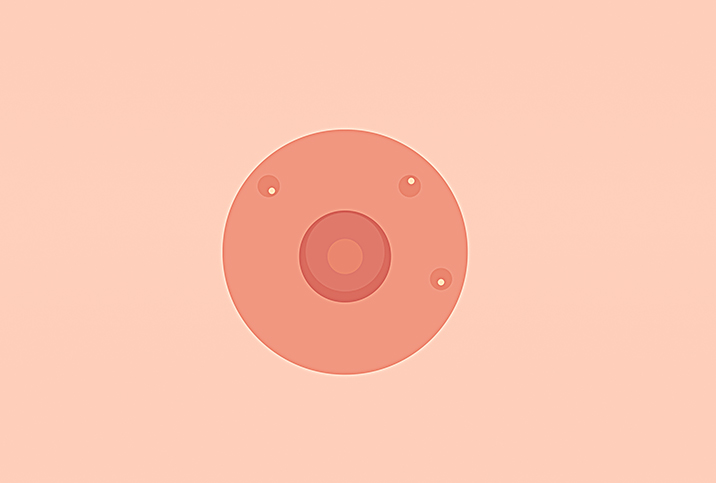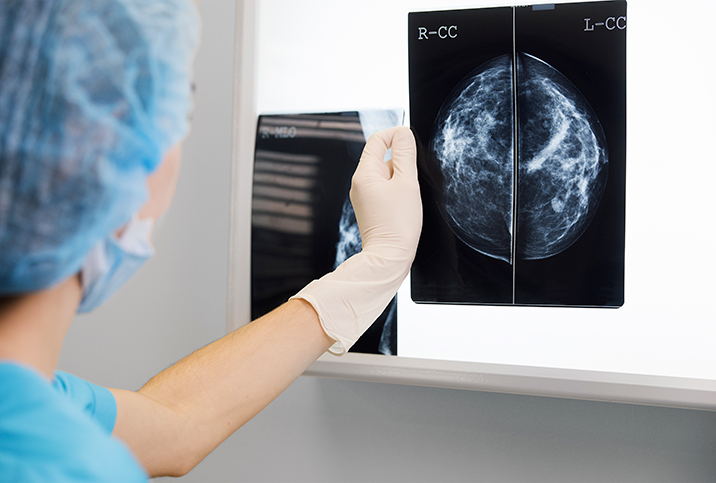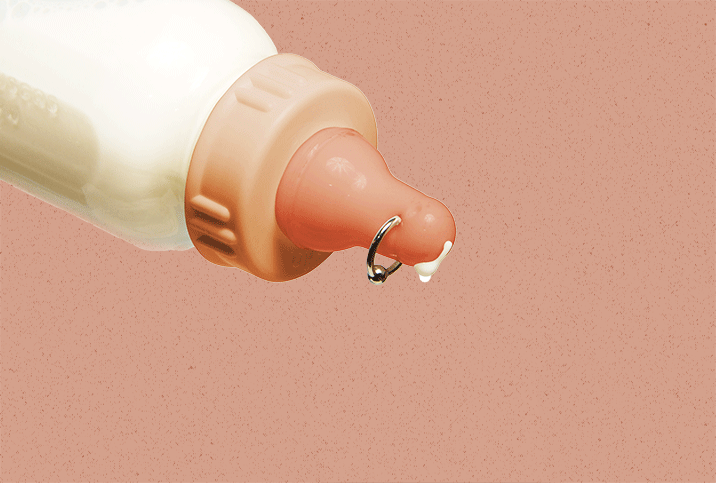Help, My Montgomery Glands Are Clogged! Here's What Experts Say to Do

Pretty much everyone has Montgomery glands, those goosebump-like dots on the areola, the dark ring around your nipple.
"Montgomery glands are a combination of milk glands and sebaceous glands," said Kim Tatum-Moyer, R.N., an international board-certified lactation consultant at Duke Birthing Center in Durham, North Carolina.
These tiny glands perform several functions, according to Tatum-Moyer. They produce oil to protect and lubricate the areola and release a scent that prompts babies to latch during breastfeeding.
But just like any other oil gland, Montgomery glands can get clogged, forming a painful, pimple-like bump on your breast.
What causes clogged Montgomery glands?
Montgomery glands are sebaceous glands, and sebaceous glands are prone to clogs. Just as sebaceous glands on your face can get blocked and form a painful pimple, Montgomery glands clogged with sebum, bacteria and dead skin cells can become swollen and red.
Like acne, clogged Montgomery glands can occur more frequently in teenagers. A roundup of two case studies published in the Journal of Family & Community Medicine reinforces this point. A 15-year-old girl's breast lump turned out to be an obstructed Montgomery gland. In the other case, pain and swelling with redness in a 13-year-old's breast were also attributed to an inflamed Montgomery cyst.
Pregnant or breastfeeding women have an increased risk of clogged glands because breasts change during pregnancy. Breast tissue swells, nipples get tender, and Montgomery glands grow larger and more pronounced.
How to recognize a clogged Montgomery gland
"Blocked Montgomery glands are not very common," Tatum-Moyer said. But if you're concerned, she listed some symptoms of a clogged Montgomery gland:
- Redness and warmth around the gland
- Localized pain or tenderness
- A small lump
If you're breastfeeding, a painful lump is just as likely to be a milk blister or a plugged milk duct, according to Shirley Scott, M.S., A.P.N., a women's healthcare nurse practitioner and perinatal educator and research specialist at the University of Illinois College of Medicine. Fortunately, at-home treatments for clogged Montgomery glands, milk blisters and plugged milk ducts are pretty similar.
Clogged Montgomery gland treatment
First things first: Yes, it's tempting, but don't try to pop a clogged Montgomery gland. Picking at any swollen sebaceous gland only increases your risk of infection and scarring.
Instead of picking and squeezing, give it time, the experts advised.
"As with blocked milk ducts during lactation, the blocked Montgomery glands will almost always resolve without special treatment within 24 to 48 hours," Tatum-Moyer said.
While a clogged Montgomery gland is nothing to worry about, you can try to clear the plug with a warm compress. Dampen a washcloth with warm water and hold it against your nipple. This action could soften the clog and release the pressure.
Washing your breasts in the shower or bath and wearing loose-fitting, comfortable clothing when working out or breastfeeding can help keep your Montgomery glands free of excess oil, sweat and milk.
Scott says treating a milk blister, which is a clogged nipple pore, works much the same way. Apply a warm compress or take a hot shower, which can gradually soften the skin on top of the clog and draw out whatever's inside, be it dirt, oil or milk.
When to see a doctor
If the clog persists for more than a couple of days or seems to be getting worse, it's time to talk to a professional. Scott recommended consulting your healthcare provider or a lactation specialist.
Clogged Montgomery glands rarely cause concern but can become infected. Talk to your doctor if you develop any of these signs of infection:
- Fever
- Body aches
- Chills
- Worsening redness or a red streak near the clog
Nipple Care 101: How to prevent clogs
If you're prone to clogged sebaceous glands on other parts of your body, there's a chance you're also more prone to clogged Montgomery's tubercles glands.
What can you do to prevent plugged pores or glands around your nipple? Keep it simple.
"Simply wash them with warm water and a mild soap," Tatum-Moyer advised.
For women who are breastfeeding, Scott recommended they rotate feeding positions, avoid underwire bras and take regular Epsom salt soaks to avoid milk clogs.
In general, washing your breasts in the shower or bath and wearing loose-fitting, comfortable clothing when working out or breastfeeding can help keep your Montgomery glands free of excess oil, sweat and milk.
Talk to your doctor if you're concerned about swollen or painful Montogmery glands. They can make sure your nipples and areolas are healthy and offer solutions for frequently clogged glands.


















